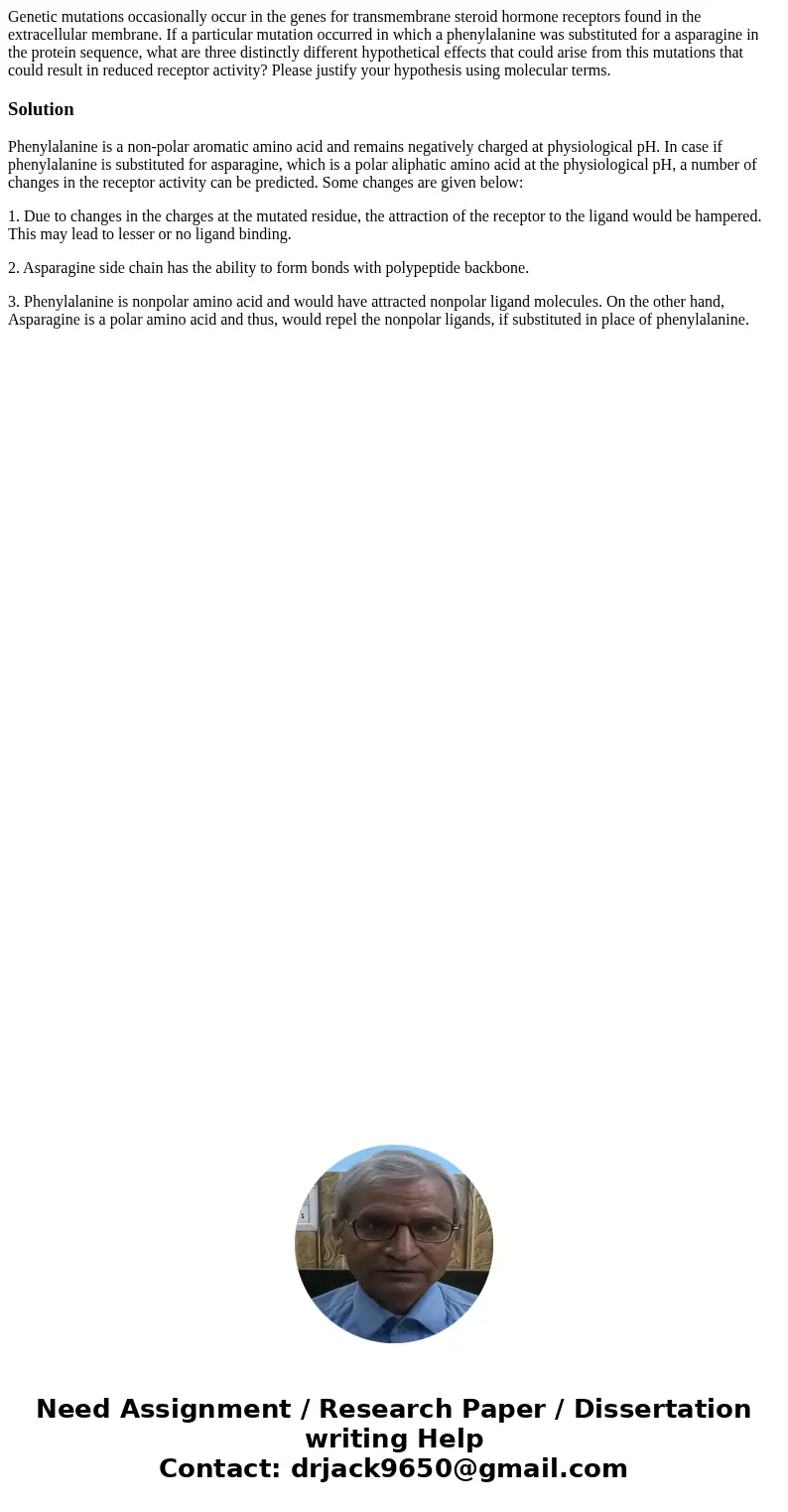Genetic mutations occasionally occur in the genes for transm
Genetic mutations occasionally occur in the genes for transmembrane steroid hormone receptors found in the extracellular membrane. If a particular mutation occurred in which a phenylalanine was substituted for a asparagine in the protein sequence, what are three distinctly different hypothetical effects that could arise from this mutations that could result in reduced receptor activity? Please justify your hypothesis using molecular terms.
Solution
Phenylalanine is a non-polar aromatic amino acid and remains negatively charged at physiological pH. In case if phenylalanine is substituted for asparagine, which is a polar aliphatic amino acid at the physiological pH, a number of changes in the receptor activity can be predicted. Some changes are given below:
1. Due to changes in the charges at the mutated residue, the attraction of the receptor to the ligand would be hampered. This may lead to lesser or no ligand binding.
2. Asparagine side chain has the ability to form bonds with polypeptide backbone.
3. Phenylalanine is nonpolar amino acid and would have attracted nonpolar ligand molecules. On the other hand, Asparagine is a polar amino acid and thus, would repel the nonpolar ligands, if substituted in place of phenylalanine.

 Homework Sourse
Homework Sourse